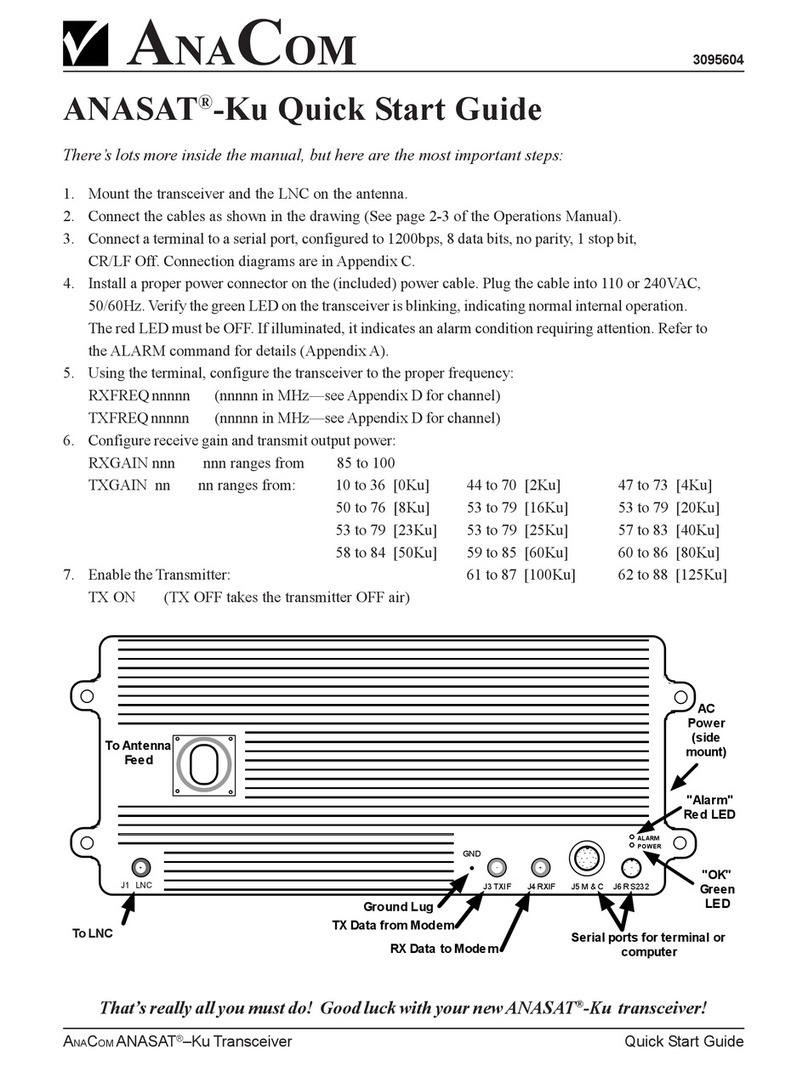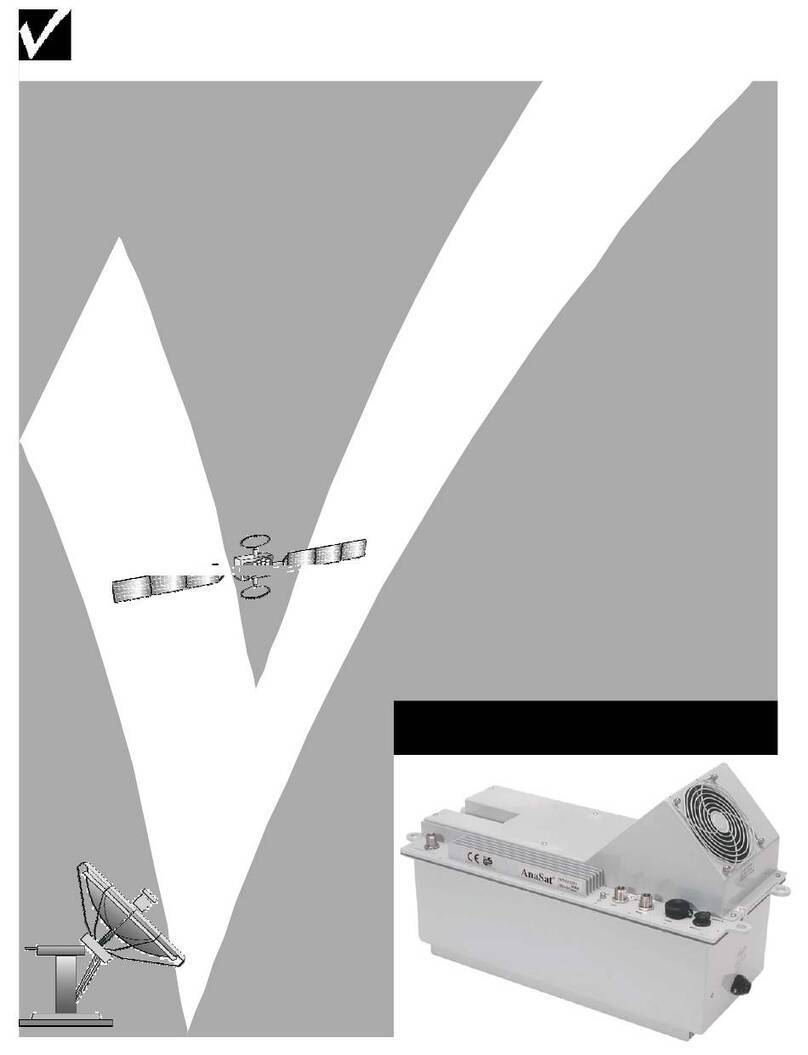
3072313
ANACOM AnaSat® Transceiver C-Band 3
Operating Manual
for
AnaSat® C-Band Transceivers
Table of Contents
AnaSat®-C Quick Start Guide .......................................................................................... 5
Introduction ........................................................................................................................ 6
Typical Operating Parameters - AnaSat® C-Band ......................................................... 7
Physical Characteristics - AnaSat® C-Band .................................................................... 8
Installation .......................................................................................................................... 9
Unpacking ................................................................................................................................ 9
Tools and Test Equipment ............................................................................................... 9
Safety Precautions ................................................................................................................ 9
General ............................................................................................................................. 9
Power Supply ................................................................................................................. 10
Transceiver ..................................................................................................................... 10
Power Amplifier............................................................................................................. 10
LNC/LNA ...................................................................................................................... 10
Site Considerations ............................................................................................................ 10
Antenna .......................................................................................................................... 10
Power Requirements ...................................................................................................... 11
Transceiver Mounting Considerations ............................................................................... 11
Transceiver Mounting .................................................................................................... 11
Grounding ...................................................................................................................... 11
LNC/LNA/TR Filter Mounting...................................................................................... 14
Cable and Waveguide Connections ................................................................................... 14
Cabling Requirements .................................................................................................... 14
1.Transmitter Feed .................................................................................................... 14
2.70MHz Modem ...................................................................................................... 14
3.AC Power ............................................................................................................... 15
4.LNC/LNA .............................................................................................................. 15
5.Terminal Connections ............................................................................................ 15
Final Check .................................................................................................................... 16
Water Resistance Wrap .................................................................................................. 16
Operation .......................................................................................................................... 18
Preliminary Steps ............................................................................................................... 18
Terminal Connection and Configuration ....................................................................... 18
Autolink ......................................................................................................................... 18
Frequency Programming ................................................................................................ 18
TXC; RXC ..................................................................................................................... 18
TXF; RXF ...................................................................................................................... 18





























